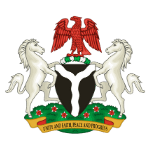A recent assessment of the use of Nigeria’s RMNCAH+N (reproductive, maternal, newborn, child and adolescent health and nutrition) scorecard in 10 states (Adamawa, Bauchi, Ebonyi, Kaduna, Kano, Kebbi, Niger, Oyo, Osun and Rivers), found that state-level scorecards are being used impactfully including for community engagement.
This is largely through integrating scorecard discussions into Ward Development Committee (WDC) meetings. The ward is the lowest administrative unit in Nigeria, and the Ward Development Committee concept is a social strategy to encourage community participation in strengthening of health care services. Ward Development Committee members are private community members and community stakeholders selected by their communities.
Scorecard discussions between local government area (LGAs) health managers, health workers and Ward Development Committee’s highlight performance of health facilities and engage in joint problem solving, through identification of bottlenecks and agreement on, and implementation of, corrective actions. The colour-coded format of the scorecard simplifies articulation of performance and gaps, and therefore provides a robust basis for Ward Development Committee discussions.
RMNCAH+N scorecard implementation in Nigeria
The Nigeria Federal Ministry of Health introduced the country’s reproductive, maternal, newborn, child and adolescent health (RMNCAH) scorecard in 2013 at the federal level. In 2017, the scorecard was enhanced by expanded use of Nigeria’s district health management information system (DHIS2), expanded to include focus on nutrition and decentralised to the state level.
Within states, the tool is further decentralised to the Local Government Area level and each state customises the scorecard to its context and needs. The RMNCAH and nutrition scorecard tools are used primarily by State Ministries of Health and, in several states, by non-health stakeholders to continuously monitor performance and strengthen accountability and action for maternal, newborn, child and adolescent health.
Learn more about how the RMNCAH+N scorecard works in Nigeria
Impact of the use of the scorecard for community engagement
Scorecard discussions with community representatives have led to better targeted health education and community-led promotion of health services. They have also unlocked resource contributions and active partnerships with communities to improve service delivery and patient experience.
We saw that our information on delivery is in the red and we knew we have to do something
PRO Daijan Ward Development Committee, Kebbi State
about it.
The examples below from Adawama, Kebbi and Oyo states, illustrate how the use of the scorecard at community level has strengthened community participation in solving health service challenges.
Communities contribute to health infrastructure and health promotion
Members of the Ward Development Committee of Dalijan PHC in Kebbi were shown the RMNCAH+N Scorecard which highlighted poor performance in antenatal care service utilization and delivery of pregnant women in the facility and the local government area. The executives of the Dalijan Ward Development Committee took several actions including:
- sensitising women to deliver in the health facility
- constructing a pit latrine
- purchasing folic acid for distribution during antenatal care
- recruiting and paying a physician and contracting a midwife
- promoting health services to communities
- providing baby nappies to mothers who attended post-natal care as a form of motivation for postnatal care attendance
These interventions contributed to improvements in health facility deliveries from 32% to 37%, postnatal care from 12% to 25% and antenatal care attendance from 66% to 96%.
In Ibadan North local government area in Oyo State, the Ward Development Committee was stimulated by scorecard discussions to conduct an assessment of health facilities and found maternity blocks and facility compound to be in poor state. Community leaders partnered with the local government to undertake renovations. The community mobilised resources to buy materials for renovation and the government did the repairs. The community also bought a laptop for one facility to support data capture.
In Adamawa State, discussion of the scorecard with the Ward Development Committee led to religious and community leaders using their platforms to promote use of antenatal care and delivery services which improved health seeking and uptake of services.
Conclusion
Communities have been prioritised as an important stakeholder group to drive improvement in primary health care in Nigeria, and several states are using their scorecards to trigger community involvement in accountability and action for RMNCAH+N.
The resulting community engagement has identified and developed areas of effective community-led problem solving and led to impactful health system-community partnerships at local level. The Government of Nigeria and its health partners are committed to expanding the use of the scorecard even further as a social accountability mechanism.
We recommend you share your scorecards widely and include a range of stakeholders (including political leaders, programme directors, partner organisations and community members and leaders) in the scorecard review process to increase the effectiveness of your scorecard.
Learn how to engage different stakeholders in the scorecard process
